I've been a photographer for a long time: I got my first camera (a Kodak Instamatic 25 camera that used 126 film cartridges) as a present when I was seven years old.
When I was 20, I bought my first proper camera: an Olympus OM1, and in the next few years I bought a telephoto zoom lens for it, a wide angle lens, a number of converters and filters, and bits and pieces of peripheral stuff. It was safe to say that generally I enjoyed taking the occasional picture. But they were just that: occasional pictures. I would seldom get through more than a couple of rolls of film in a year and most of those were used up on holidays and ski trips. It was a real pain going off to the shops and handing in film to be developed.
Then in 2003 I made the leap and got myself an Olympus digital camera. It had quite an effect on the rate at which I took photographs. In the first eight months I'd taken over 600 pictures, and there are quite a few photos on this website that were taken with it. Over the next few years I really started to look at what I was taking pictures of with a new eye, and tried to develop my skills in framing and composition. I took far more pictures, and realised I had far more opportunities to take interesting pictures than I'd realised before.
So I took the camera with me far more often than I'd ever done with the OM1. Unfortunately, this wasn't always a good idea and eventually the C300z got rather squished on a ski trip. After sending it away for repair I realised that I needed something to sustain my burgeoning passion for photography. It was time to take another step forwards, and I got myself a Canon digital SLR.
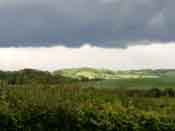 |
 |
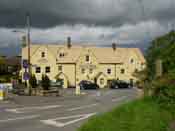 |
What I've learned so far is to always take pictures at the highest resolution you can - better to scale things down later than to sit there wondering how you can scale a picture up without it looking blocky. I've also learned to use rechargable batteries - otherwise it can be a very expensive hobby - and always to have a spare set of batteries with me.
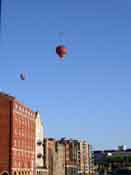 |
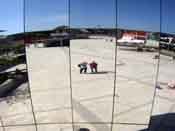 |
 |
I've also upgraded my printer so I could make hard copies of the results - and from taking a picture to having an A4 print in my hand ready for framing now takes less than ten minutes, which I still find mind-boggling.
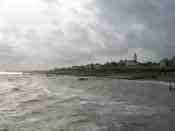 |
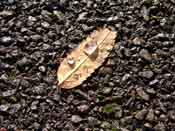 |
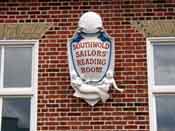 |
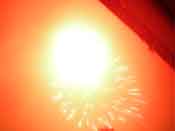 |
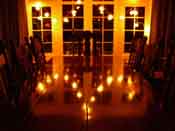 |
 |
These thumbnails show a selection of the pictures I've taken over the last couple of years. I feel like I'm beginning to develop a fairly good eye for a reasonable picture, and the folks I've shown them to seem to agree with me.
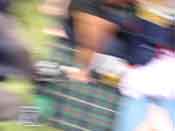 |
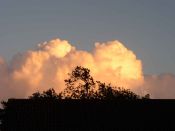 |
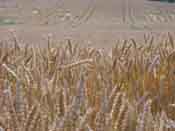 |
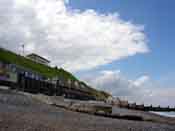 |
 |
 |
I've also learnt that with a digital camera you can never take too many pictures, only too few.
 |
 |
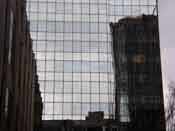 |
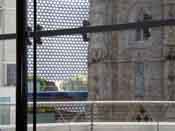 |
 |
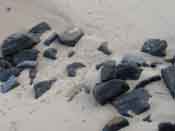 |
These photos are examples of some of the pictures I've taken in the last five years or so. Most of the photos on this web page are also available on my Flickr Page, and at higher resolution, too.
 |
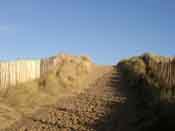 |
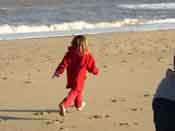 |
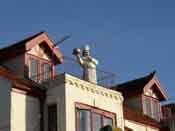 |
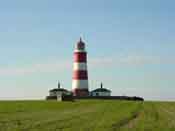 |
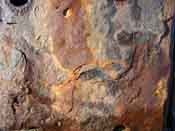 |
I added a photoblog page to this site that I used to use to show a selection of my pictures from time to time. However, because there are far easier solutions these days than hand-coding a page for each photo, the page has been retired.
I used to work in video in BT's Distance Learning Unit, which was probably the most enjoyable job I've ever had. Back in those days (the late 80s and early 90s) you needed to make a significant investment in equipment if you wanted to set yourself up in video production. An offline edit suite like the one I learnt to use, which had a basic Avid desk, would have cost many thousands of pounds. We shot and edited using the Betacam SP format, used by corporate and broadcast video teams the world over. BT even paid for me to go on a video production course at Sony, where I learnt about the practice and grammar of video and got to practise directing television programmes in a real TV studio. It was the best course I have ever been on.
Video capture cards for home computers started to appear just as I left BT in the mid 90s, and by the turn of the 21st century they were becoming affordable for home users. Ever since I'd left BT I'd been hankering to do video work again, and when the prices finally dropped low enough I bought myself something called a Pinnacle DC10 that let me save video as a computer file that I could then edit. I also splashed out on my first camcorder—and I went for one in miniDV format, which meant that I could transfer the video I'd shot to the PC as a digital file over a Firewire cable as well as capturing it (and other material) from the capture card. Using the copy of Adobe Premiere that we had at work, I was able to get pretty good results editing the material I shot.
One of the first things I learned when shooting video was that it's important not to jerk your camera around when you're filming. Trying to watch video that's been shot this way is so disorienting that it can make people sick; it hurts. I made sure to move the camera so that it glides, rather than spasms, from one viewpoint to the next. At BT it was easy—I got used to filming with a baby steadicam, which was a gorgeous bit of kit that looked like it had escaped from the movie Aliens. It positioned the camera at the end of a spring-loaded supporting arm that was balanced with a counterweight. This damped down any movement transmitted by your arm and smoothed out shakes so the picture didn't wobble about as much. Because this means that you aren't looking through the camera viewfinder, it had a little LCD screen on it that was built in to the supporting arm; once the camera was plugged in, you used it to watch what you were shooting. It was quite possibly the coolest piece of equipment I've ever used. A full-on steadicam as used for a Panavision camera is a very hefty piece of kit and you need to be strong and sturdy to lift one, but the swooping, gliding effect it can achieve is instantly recognisable. The movie director Sam Raimi used to get the same floating effect in his movies by taping his camera to the middle of a plank of wood: with a guy carrying each end, the wobbles were kept to a minimum.
But the need for a steadicam has gone away, along with much of the technology that I wrote about at great length in earlier versions of this web page. It's just not relevant any more. There are few fields where technology has developed as rapidly as that of consumer-level video. The miniDV camcorder that was my pride and joy fifteen years ago is now gathering dust in a cupboard. I have a bag full of devices that all shoot in high definition and record on SD cards with the capacity for hours and hours of material, with no need for me to swap cassettes or defrag its integral hard disc drive. Even my six-year-old stills camera shoots video in full HD with image stabilisation, an assortment of colour correction tools, and it has a slow motion function. Then again, so does my mobile phone...
Which meant that in 2017 I was able to take the Eurostar to Bruges to shoot a pop video for a friend of mine with all the equipment I needed for a multi-camera HD shoot in a bag slung over my shoulder.
When you're filming stuff, try to have an idea of how you're going to use it. Why are you taking a particular shot? If you're telling a story, make sure you know what that story is. If you don't plan your story, you may find that one of your important chapters is missing - because you didn't think to film it on the day.
The same thing also applies once you start editing your footage together. Have a look at everything you've got. Those are the paragraphs to your story. Make sure that you put them together in a way that the viewer can understand, even if they weren't originally shot in that order.
If a friend has a camcorder as well, and you're at the same event, pool your resources. The most fun I've had putting something together at home was when I had anything up to three camera angles of the same event. There are some movie directors who don't work with that much material!
From my earlier comments you may be thinking of putting things off until a better piece of technology comes on the market. Don't think this, because if you do, you'll end up never buying anything. Take the plunge now - it's possible to get good results without having to spend thousands.
Other things to bear in mind? Make sure that you invest in at least two sets of rechargeable batteries for each piece of kit; use a good brand (because it'll definitely pay off in the number of charges you get out of them).
Get a built-in card reader for all your PCs. It makes life so much easier. And get a plug-in USB version to put in your camera bag, too.
Some other things I've learned in my years of making videos include:
- Forget the fancy transitions. Fades and cuts are all you need.
- Digital zooms are, by and large, completely useless. Get a camera with a good optical zoom instead. But following on from that...
- Keep your fingers off the zoom control while you're shooting. Use the zoom before you start recording to get your framing right, then leave it alone!
- Keep quiet when you're recording. Concentrate on getting the sound right from the people in front of the camera. If you want a voiceover, dub it on later. Don't do it at the time.
- If your camcorder has a wind cut facility, switch it on.
- Credits and captions can make an incredible difference to your videos, but use them sparingly, and choose a font that you'll still be able to read when the end result is played back on the TV.
- Use your camcorder around people enough, and they'll get used to it. You'll get much better results when people aren't conscious of the fact that you're waving a camera around.
- A tripod is an immensely useful thing, particularly when it's been set up so that the horizon is level.
- Make sure your batteries are charged before that important event starts...
- ...and if you can't decide whether or not to take the camera, you should always take it with you.
More than anything else, though - have fun. Don't make everyone else's life a misery getting your production just right. You're there to record the day, not control it!
Oh, and back up your files to a computer regularly, and make a backup of the computer files somewhere else. Don't leave all your valuable (and irreplaceable) eggs in one basket.
OK, the stuff I've got isn't going to set the world on fire at the professional level, but there again, I'm not doing this professionally. On the other hand, from a hobbyist point of view, I'm not doing too badly.
- Canon EOS50D digital SLR
- Canon EOS350D digital SLR
- Canon PowerShot SX40 HS digital still/video camera
- Canon Legria HD camcorder
- Zoom Q8 Handy Recorder
- Zoom 3n Handy Recorder
In a field that's moving as fast as the digital domain, the Olympus C300z camera I bought back in 2003 looks laughable now. It stored files on a card format that is now obsolete and its maximum resolution of 1984 by 1488 pixels is, quite frankly, embarrassing. My mobile phone takes pictures with better results. The Olympus shot short video clips, but they didn't have sound.
And that's an important point: be prepared for your gear to become obsolete almost as soon as you've paid for it. It's a field of technology which has seen upgraded models come out at about six-month intervals. Just after I got the 300z, my sister bought a Canon A70 which offered more control over exposures, and it recorded movies with sound.
One thing I found fairly quickly was that the 300z didn't really offer that much control over the exposure and focusing, and the delay in the shutter release (which was common in early digital cameras) was a pain. After thirty years finding my way around the OM1, I'd got used to choosing where I wanted the focus to be, not having the camera decide for me. Eventually I got so frustrated with it that I decided to get another pocket-sized point-and-shoot digital camera for taking to gigs. I chose a Canon PowerShot A720IS because it had a pretty decent optical zoom, an eight-megapixel sensor, and it shot movies with sound. It did very well in low light and it even had built-in image stabilisation, which turned out to be far more useful than I expected it to be. The PowerShot had the same sensor size as the 350D digital SLR I'd bought a couple of years earlier.
Ahh, the EOS350D. You may know it better as the Digital Rebel XT if you live in the States. I bought mine in 2006, and I loved it from the moment I first pressed the shutter. The EOS350D was my first digital SLR, and I've enjoyed creating every picture I've taken with it. In three years, I'd gone round the clock with it - when the counter got to IMG_9999, the next shot wound things back to zero. As I approached my 11,000th shot I started to get twitchy about whether it would keep going, as the shutter is only rated for 10,000 exposures. As I was heading off on a photography holiday at the time, I didn't fancy having it break down while I was miles away from home, so I splashed out on its big brother, the EOS50D. It's got a 15 megapixel sensor and the images work out at 4752 by 3168 pixels, which gives me a lot more image to play with. The shutter release on the 50D sounds much more robust than the 350D, too - when you press the shutter there's an extremely satisfying thunk. I hope it's more robust, because I've taken that round the clock, as well.
Although it doesn't shoot video, the 50D has functions that were unheard of when the 350D came out, including one called live view which flips the mirror up out of the way and lets you frame the shot using the display on the back of the camera instead of the viewfinder. The sensor has an ultrasonic shaking mechanism to keep it clean. The user display is on the top of the camera rather than under the viewfinder, and you can switch on a backlight for it - which will come in very handy when I'm taking long exposures at night with a tripod. The ISO sensitivity is ridiculous - at ISO 1600 it takes perfectly usable pictures, but with the custom functions enabled it will even shoot at a ridiculous ISO equivalent of 12800 and the results are quite acceptable, if a little noisy. The 50D came with the first DSLR lens I've owned to have image stabilisation, a Canon EF-S 18-200mm kit lens. It's been such a useful all-round lens that it stays on the camera by default. However I've bought myself a number of other lenses over the years, including the Canon EF-S 10-22mm wide zoom, which quite frankly makes it almost impossible to not take a striking and dynamic photograph.
With the extra battery pack and a selection of lenses to carry around, the 50D is neither small or light. When I travel these days I take another PowerShot with me instead, a SX40 HS that I bought in 2012. It has a quite ridiculous zoom lens (the equivalent of a 28 - 840mm lens on a 35mm SLR) that has built-in image stabilization and it shoots video in full HD as well.
After more than a decade of digital photography, I'm hooked. It's possible to do so much more with your pictures when they're in a digital format, which brings me nicely on to the next subject I want to cover...
It's amazing what software you can get without having to spend loads of money. I used to use some useful stuff - like Spin Panorama, which created Quicktime Panorama images - from old PC magazine cover disks. It's a shame that the company that made Spin Panorama is no longer in business, because I'd have upgraded to a full product on the spot. But they're not in business partly because these days, the panorama function is built directly into the camera. Even my phone can take perfectly-stitched panoramas at the push of a (virtual) button.
My latest copy of Paint Shop Pro came with a pack of 50 Imation CD-Rs, but open source image editing software like The GIMP is freely available on the net and the latest versions give Adobe Photoshop a run for its money. For just viewing images, if you're running Windows and you haven't already got it, you really need to download Irfan Skiljan's "IrfanView". For home users it's freeware, and it's about the best there is. The link's given at the bottom of the page.
For video editing on a budget, I use Vegas Movie Studio Platinum. It used to be a Sony product, but it's now owned by Magix. I've tried all the main budget video packages, and Vegas is by far the best. In fact it does a better job than the hideously expensive version of Adobe Premiere that I used to use at work.
My Canon i950 printer hasn't been touched for a couple of years. These days, if I need anything printing I'll use an online service like Snapfish. It's not as fast, sure, but it's a lot cheaper and the results are much better.
As far as video goes, Vegas comes with its DVD Architect software, which is great for creating DVDs with selectable menus that will play in most DVD players. If you've got a drive that'll burn them, you can create BluRays with it as well.
- IrfanView - the must-have graphics viewer for Windows.
- The GIMP a free and very powerful image editing program.
- Digital Photography Review - never buy gear without checking here first.
- Adobe's KULER - online colour resource
- Tom's Hardware Guide
